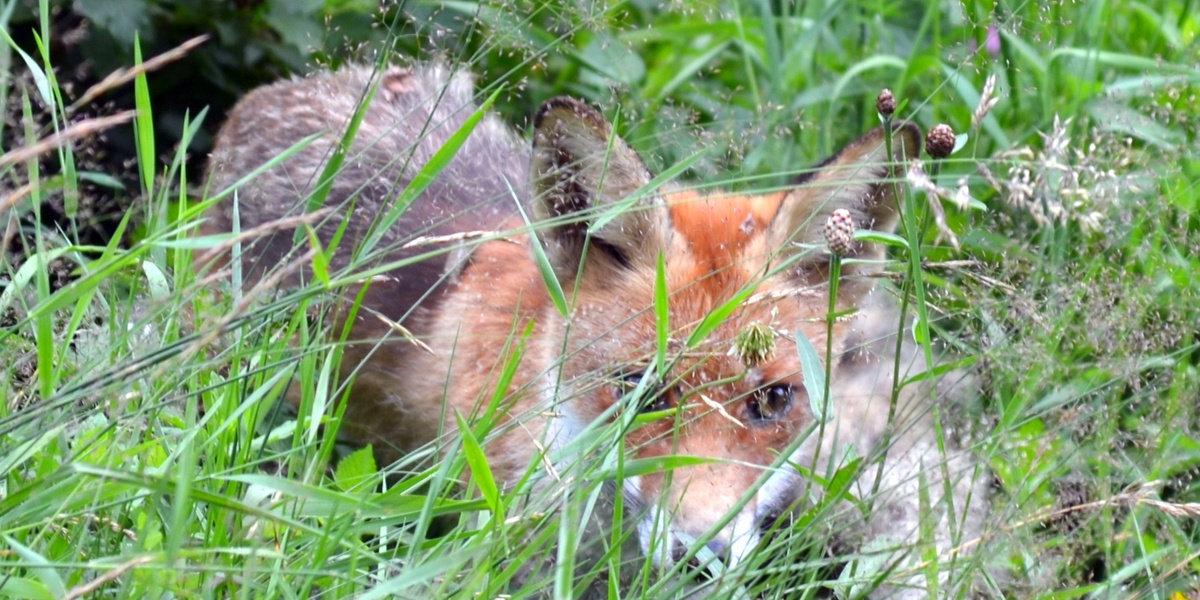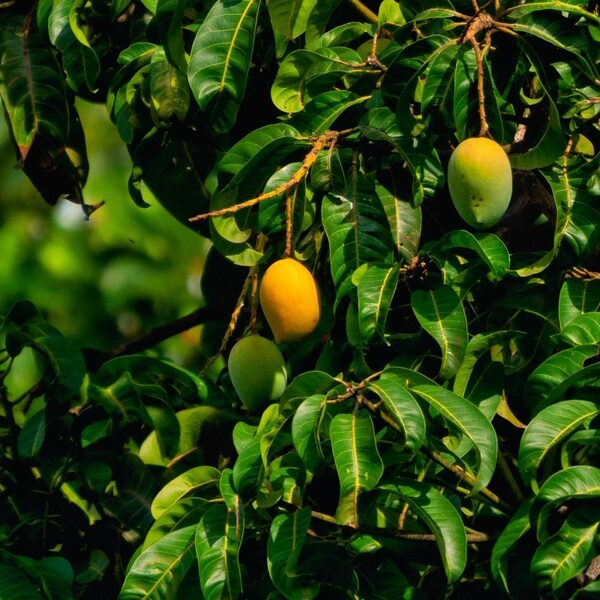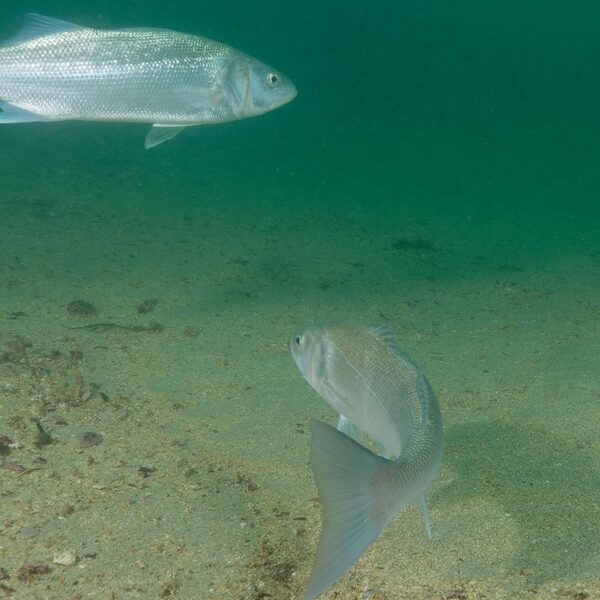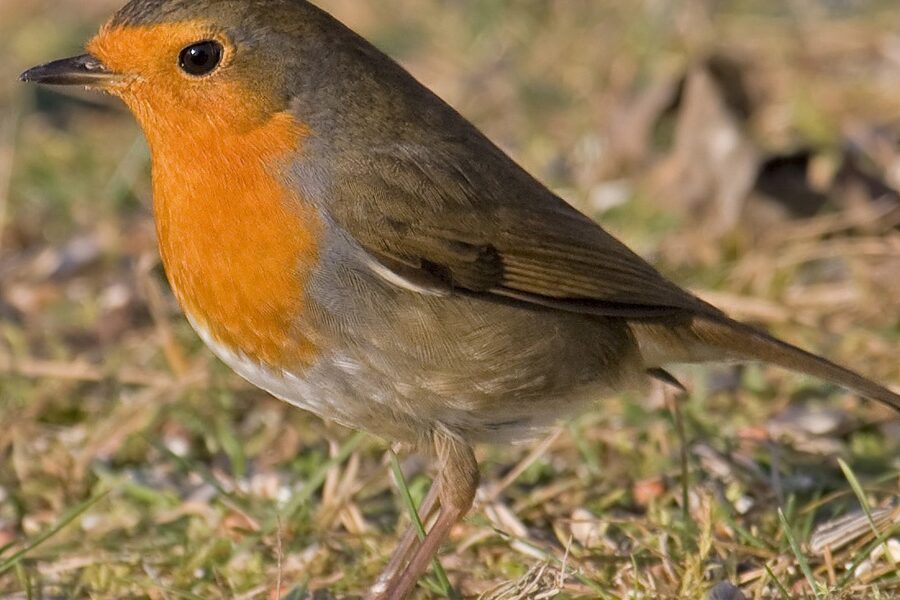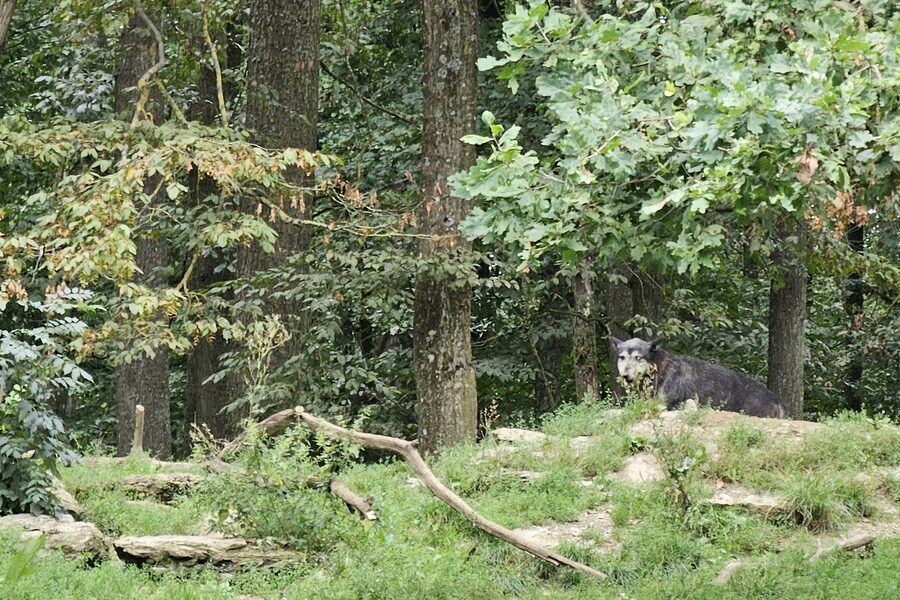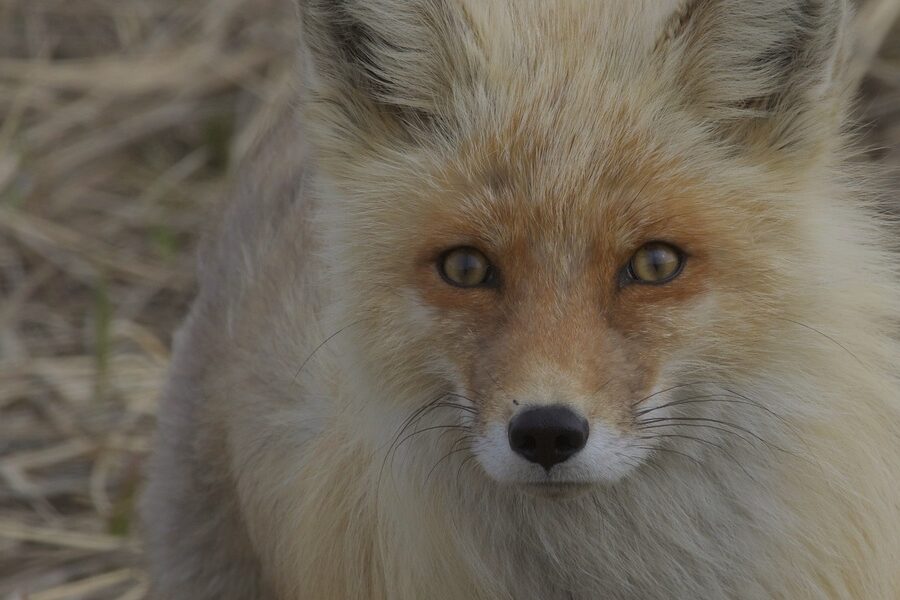Germany’s forests, meadows and river valleys host a surprising variety of wildlife, and much of it lives close to towns and villages. From alpine foothills to North Sea coasts, mammals are woven into Germany’s changing landscapes and seasonal rhythms.
There are 53 Mammals of Germany, ranging from American Mink to Yellow-necked Mouse. The list below is organized so you can see each species’ Scientific name, Typical size (cm), and the German states where it occurs, making it easy to compare range and body size at a glance — you’ll find the full table below.
Which habitats in Germany hold the highest mammal diversity?
Woodlands with mixed tree species and riparian corridors (riverbanks and wetlands) support the greatest variety because they supply food, shelter and migration routes; agricultural mosaic landscapes also host many common species, while alpine and coastal zones have more specialized, fewer species.
How can I tell common mammals apart on a short walk?
Focus on size, silhouette, movement and habitat: for example, bank-dwelling mustelids like the American Mink are slender and swim, while small rodents such as the Yellow-necked Mouse are tiny, quick and found in leaf litter; carrying a pocket guide with Scientific names helps confirm IDs after a sighting.
Mammals of Germany
| Common name | Scientific name | Typical size (cm) | German states |
|---|---|---|---|
| Red Fox | Vulpes vulpes | 50-65 | Baden-Württemberg,Bavaria,Berlin,Brandenburg,Bremen,Hamburg,Hesse,Lower Saxony,Mecklenburg-Vorpommern,North Rhine-Westphalia,Rhineland-Palatinate,Saarland,Saxony,Saxony-Anhalt,Schleswig-Holstein,Thuringia |
| European Wolf | Canis lupus | 75-95 | Brandenburg,Saxony,Lower Saxony,Mecklenburg-Vorpommern,Saxony-Anhalt,North Rhine-Westphalia,Thuringia,Bavaria,Hesse,Rhineland-Palatinate |
| Eurasian Lynx | Lynx lynx | 65-95 | Bavaria,Saxony,Lower Saxony,Saxony-Anhalt |
| European Wildcat | Felis silvestris | 45-80 | Baden-Württemberg,Bavaria,Saxony,Thuringia,Hesse |
| European Badger | Meles meles | 60-90 | Baden-Württemberg,Bavaria,Berlin,Brandenburg,Bremen,Hamburg,Hesse,Lower Saxony,Mecklenburg-Vorpommern,North Rhine-Westphalia,Rhineland-Palatinate,Saarland,Saxony,Saxony-Anhalt,Schleswig-Holstein,Thuringia |
| European Otter | Lutra lutra | 60-90 | Baden-Württemberg,Bavaria,Brandenburg,Lower Saxony,North Rhine-Westphalia,Rhineland-Palatinate,Saxony,Saxony-Anhalt,Schleswig-Holstein,Mecklenburg-Vorpommern,Hesse |
| Raccoon | Procyon lotor | 35-55 | Baden-Württemberg,Bavaria,Berlin,Brandenburg,Hesse,Lower Saxony,Mecklenburg-Vorpommern,North Rhine-Westphalia,Rhineland-Palatinate,Saxony,Saxony-Anhalt,Schleswig-Holstein |
| Raccoon Dog | Nyctereutes procyonoides | 45-60 | Brandenburg,Saxony,Mecklenburg-Vorpommern,Saxony-Anhalt,Lower Saxony |
| American Mink | Neogale vison | 30-45 | Baden-Württemberg,Bavaria,Brandenburg,Lower Saxony,North Rhine-Westphalia,Saxony,Saxony-Anhalt,Rhineland-Palatinate,Mecklenburg-Vorpommern |
| Pine Marten | Martes martes | 35-50 | Baden-Württemberg,Bavaria,Berlin,Brandenburg,Hesse,Lower Saxony,North Rhine-Westphalia,Rhineland-Palatinate,Saxony,Saxony-Anhalt,Thuringia |
| Stone Marten | Martes foina | 35-50 | Baden-Württemberg,Bavaria,Berlin,Brandenburg,Hesse,Lower Saxony,North Rhine-Westphalia,Rhineland-Palatinate,Saarland,Saxony,Saxony-Anhalt,Thuringia |
| European Polecat | Mustela putorius | 30-40 | Baden-Württemberg,Bavaria,Berlin,Brandenburg,Hesse,Lower Saxony,North Rhine-Westphalia,Rhineland-Palatinate,Saxony,Saxony-Anhalt,Mecklenburg-Vorpommern |
| Stoat (Ermine) | Mustela erminea | 20-30 | Baden-Württemberg,Bavaria,Berlin,Brandenburg,Hesse,Lower Saxony,North Rhine-Westphalia,Rhineland-Palatinate,Saxony,Saxony-Anhalt,Mecklenburg-Vorpommern,Thuringia |
| Least Weasel | Mustela nivalis | 15-22 | Baden-Württemberg,Bavaria,Berlin,Brandenburg,Hesse,Lower Saxony,North Rhine-Westphalia,Rhineland-Palatinate,Saxony,Saxony-Anhalt,Mecklenburg-Vorpommern,Schleswig-Holstein,Thuringia |
| European Hare | Lepus europaeus | 45-65 | Baden-Württemberg,Bavaria,Berlin,Brandenburg,Hesse,Lower Saxony,Mecklenburg-Vorpommern,North Rhine-Westphalia,Rhineland-Palatinate,Saarland,Saxony,Saxony-Anhalt,Schleswig-Holstein,Thuringia |
| European Rabbit | Oryctolagus cuniculus | 30-40 | Baden-Württemberg,Bavaria,Berlin,Brandenburg,Hesse,Lower Saxony,North Rhine-Westphalia,Rhineland-Palatinate,Saarland,Saxony,Schleswig-Holstein |
| Wild Boar | Sus scrofa | 80-110 | Baden-Württemberg,Bavaria,Berlin,Brandenburg,Hesse,Lower Saxony,Mecklenburg-Vorpommern,North Rhine-Westphalia,Rhineland-Palatinate,Saarland,Saxony,Saxony-Anhalt,Thuringia,Schleswig-Holstein |
| Roe Deer | Capreolus capreolus | 60-75 | Baden-Württemberg,Bavaria,Berlin,Brandenburg,Hesse,Lower Saxony,Mecklenburg-Vorpommern,North Rhine-Westphalia,Rhineland-Palatinate,Saarland,Saxony,Saxony-Anhalt,Schleswig-Holstein,Thuringia |
| Red Deer | Cervus elaphus | 170-250 | Baden-Württemberg,Bavaria,Lower Saxony,Saxony,Mecklenburg-Vorpommern,Rhineland-Palatinate,Saarland |
| Fallow Deer | Dama dama | 100-135 | Baden-Württemberg,Bavaria,Hesse,Lower Saxony,North Rhine-Westphalia,Rhineland-Palatinate,Saxony |
| European Beaver | Castor fiber | 70-90 | Baden-Württemberg,Bavaria,Brandenburg,Hesse,Lower Saxony,Mecklenburg-Vorpommern,North Rhine-Westphalia,Rhineland-Palatinate,Saxony,Saxony-Anhalt,Thuringia |
| Moose (Eurasian Elk) (vagrant) | Alces alces | 200-250 | Schleswig-Holstein,Mecklenburg-Vorpommern,Brandenburg |
| European Hedgehog | Erinaceus europaeus | 20-30 | Baden-Württemberg,Bavaria,Berlin,Brandenburg,Bremen,Hamburg,Hesse,Lower Saxony,Mecklenburg-Vorpommern,North Rhine-Westphalia,Rhineland-Palatinate,Saarland,Saxony,Saxony-Anhalt,Schleswig-Holstein,Thuringia |
| Common Vole | Microtus arvalis | 8-12 | Baden-Württemberg,Bavaria,Brandenburg,Lower Saxony,North Rhine-Westphalia,Rhineland-Palatinate,Saxony,Thuringia |
| Water Vole | Arvicola amphibius | 14-22 | Baden-Württemberg,Bavaria,Brandenburg,Lower Saxony,Mecklenburg-Vorpommern,North Rhine-Westphalia,Rhineland-Palatinate,Saxony,Saxony-Anhalt,Thuringia |
| Brown Rat | Rattus norvegicus | 20-25 | All states |
| House Mouse | Mus musculus | 6-9 | All states |
| Wood Mouse | Apodemus sylvaticus | 7-10 | Baden-Württemberg,Bavaria,Berlin,Brandenburg,Hesse,Lower Saxony,Mecklenburg-Vorpommern,North Rhine-Westphalia,Rhineland-Palatinate,Saxony,Saxony-Anhalt,Schleswig-Holstein,Thuringia |
| Yellow-necked Mouse | Apodemus flavicollis | 8-12 | Baden-Württemberg,Bavaria,Berlin,Brandenburg,Hesse,Lower Saxony,North Rhine-Westphalia,Rhineland-Palatinate,Saxony,Thuringia |
| Bank Vole | Myodes glareolus | 8-10 | Baden-Württemberg,Bavaria,Berlin,Brandenburg,Hesse,Lower Saxony,Mecklenburg-Vorpommern,North Rhine-Westphalia,Rhineland-Palatinate,Saxony,Saxony-Anhalt,Schleswig-Holstein,Thuringia |
| Red Squirrel | Sciurus vulgaris | 18-25 | Baden-Württemberg,Bavaria,Berlin,Brandenburg,Hesse,Lower Saxony,Mecklenburg-Vorpommern,Baden-Württemberg,North Rhine-Westphalia,Rhineland-Palatinate,Saxony,Saxony-Anhalt,Thuringia |
| Edible Dormouse | Glis glis | 14-19 | Baden-Württemberg,Bavaria,Hesse,Lower Saxony,North Rhine-Westphalia,Rhineland-Palatinate,Saxony |
| Hazel Dormouse | Muscardinus avellanarius | 6-9 | Baden-Württemberg,Bavaria,Hesse,Rhineland-Palatinate,Saxony |
| Garden Dormouse | Eliomys quercinus | 12-18 | Baden-Württemberg,Bavaria,Hesse,Rhineland-Palatinate,Saarland |
| European Mole | Talpa europaea | 12-16 | All states |
| Common Shrew | Sorex araneus | 6-9 | All states |
| Eurasian Water Shrew | Neomys fodiens | 8-12 | Baden-Württemberg,Bavaria,Brandenburg,Lower Saxony,Mecklenburg-Vorpommern,North Rhine-Westphalia,Saxony,Saxony-Anhalt,Thuringia |
| Brown Long-eared Bat | Plecotus auritus | 4-7 | Baden-Württemberg,Bavaria,Berlin,Brandenburg,Hesse,Lower Saxony,Mecklenburg-Vorpommern,North Rhine-Westphalia,Rhineland-Palatinate,Saxony,Saxony-Anhalt,Thuringia |
| Common Pipistrelle | Pipistrellus pipistrellus | 3-5 | All states |
| Soprano Pipistrelle | Pipistrellus pygmaeus | 3-5 | Baden-Württemberg,Bavaria,Berlin,Brandenburg,Hesse,Lower Saxony,Mecklenburg-Vorpommern,North Rhine-Westphalia,Rhineland-Palatinate,Saxony,Saxony-Anhalt,Thuringia,Schleswig-Holstein |
| Nathusius’ Pipistrelle | Pipistrellus nathusii | 3-4 | Brandenburg,Mecklenburg-Vorpommern,Saxony-Anhalt,Lower Saxony,Schleswig-Holstein |
| Noctule | Nyctalus noctula | 5-7 | Baden-Württemberg,Bavaria,Berlin,Brandenburg,Hesse,Lower Saxony,Mecklenburg-Vorpommern,North Rhine-Westphalia,Rhineland-Palatinate,Saxony,Saxony-Anhalt,Thuringia |
| Leisler’s Bat | Nyctalus leisleri | 5-6 | Baden-Württemberg,Bavaria,Berlin,Brandenburg,Hesse,Lower Saxony,Mecklenburg-Vorpommern,North Rhine-Westphalia,Rhineland-Palatinate,Saxony |
| Daubenton’s Bat | Myotis daubentonii | 4-6 | Baden-Württemberg,Bavaria,Berlin,Brandenburg,Lower Saxony,Mecklenburg-Vorpommern,North Rhine-Westphalia,Rhineland-Palatinate,Saxony,Saxony-Anhalt,Thuringia |
| Natterer’s Bat | Myotis nattereri | 4-6 | Baden-Württemberg,Bavaria,Berlin,Brandenburg,Hesse,Lower Saxony,North Rhine-Westphalia,Rhineland-Palatinate,Saxony,Saxony-Anhalt,Thuringia |
| Greater Mouse-eared Bat | Myotis myotis | 6-9 | Bavaria,Baden-Württemberg,Saarland,Rhineland-Palatinate |
| Barbastelle | Barbastella barbastellus | 4-6 | Baden-Württemberg,Bavaria,Berlin,Brandenburg,Hesse,Lower Saxony,North Rhine-Westphalia,Rhineland-Palatinate,Saxony |
| Greater Horseshoe Bat | Rhinolophus ferrumequinum | 6-8 | Bavaria,Baden-Württemberg,Rhineland-Palatinate,Saarland |
| Lesser Horseshoe Bat | Rhinolophus hipposideros | 4-6 | Bavaria,Baden-Württemberg,Rhineland-Palatinate |
| Harbour Porpoise | Phocoena phocoena | 120-160 | Schleswig-Holstein,Lower Saxony,Mecklenburg-Vorpommern |
| Bottlenose Dolphin | Tursiops truncatus | 200-300 | Schleswig-Holstein,Lower Saxony,Mecklenburg-Vorpommern |
| Harbour Seal | Phoca vitulina | 120-160 | Schleswig-Holstein,Lower Saxony,Mecklenburg-Vorpommern |
| Grey Seal | Halichoerus grypus | 200-300 | Lower Saxony,Schleswig-Holstein,Mecklenburg-Vorpommern |
Images and Descriptions
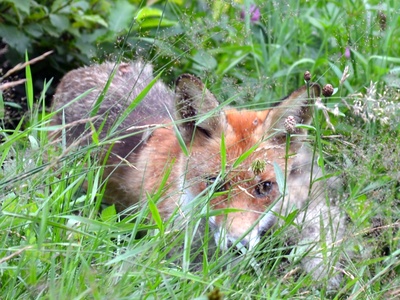
Red Fox
Adaptable omnivore with a reddish coat, bushy tail and pointed ears. Found in forests, farmland, towns and suburbs across Germany. Common in all states. Bold, opportunistic and mainly crepuscular, it often scavenges near roads, fields and gardens.
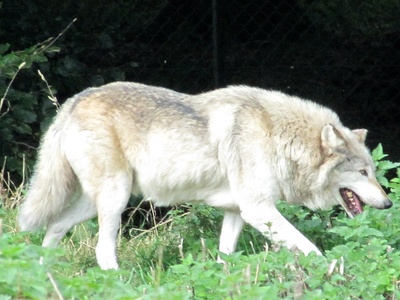
European Wolf
Large social carnivore returning across Germany after recolonization. Prefers forests and lowlands with deer and wild boar. Present in several eastern and central states and expanding west. Avoids dense human settlement but increasingly seen near farmland and forest edges.
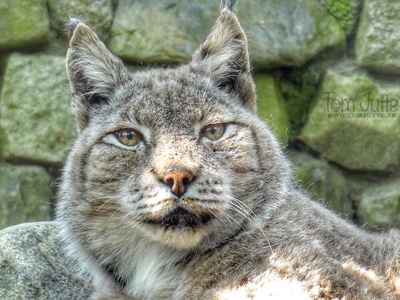
Eurasian Lynx
Solitary, secretive forest cat with tufted ears and short tail. Reintroduced in the Bavarian Forest and Harz. Prefers mature forests with roe deer. Rare but stable local populations in southern and eastern forested regions.
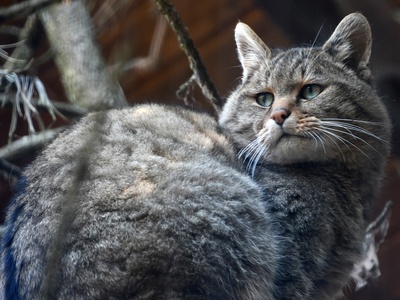
European Wildcat
Stocky, tabby-coated forest cat resembling a large domestic cat. Lives in mature woodlands and riparian zones, mainly nocturnal. Fragmented populations in southwest and east; conservation focus due to hybridization with feral cats.
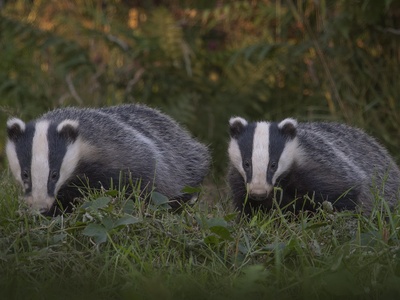
European Badger
Black-and-white masked omnivore that digs setts and feeds on earthworms, insects and small vertebrates. Common and widespread across Germany in woodlands and farmland, often visible at dusk near hedgerows and field margins.
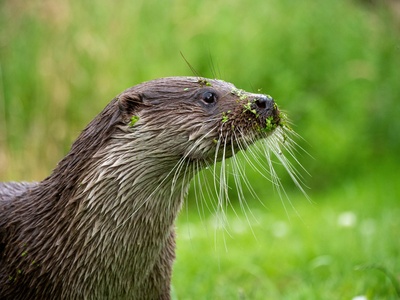
European Otter
Semi-aquatic mammal with a sleek body and webbed feet. Lives in rivers, lakes and coasts. Populations have recovered after declines; look for slides, holts and fish remains along quieter waterways.
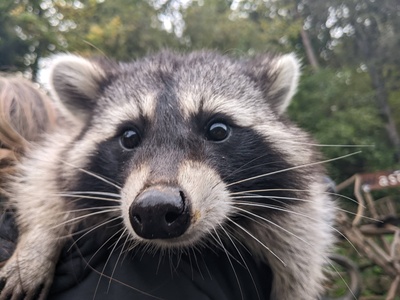
Raccoon
Introduced omnivore known for masked face and dexterous paws. Thrives in woodlands, wetlands and urban parks. Widespread and expanding; opportunistic diet and nocturnal, often raiding bins and gardens.
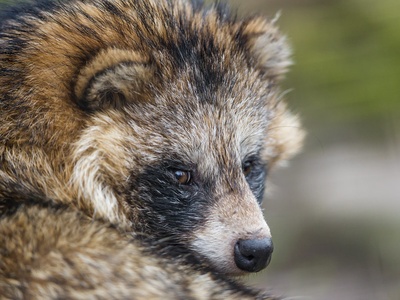
Raccoon Dog
Introduced canid-like mammal from Asia with dense fur and scavenging habits. Established in northeastern Germany and spreading. Nocturnal and secretive, visits wetlands, forests and fields; can carry parasites and hybridize poorly with natives.
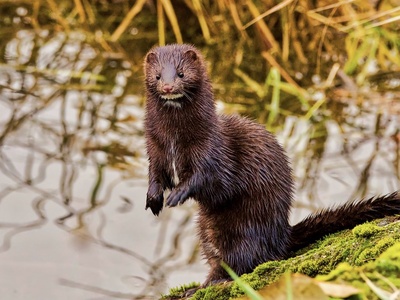
American Mink
Invasive semi-aquatic mustelid escaped from fur farms. Small, dark and agile in water. Predatory impacts on native water voles and birds; common along rivers and lakes, though control efforts continue.
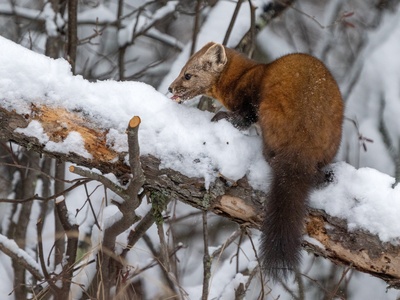
Pine Marten
Arboreal, slender mustelid with chest patch and bushy tail. Prefers mature woodlands and hunts squirrels, birds and small mammals. Widespread but patchy, often seen at dusk or on roadkill surveys near forests.
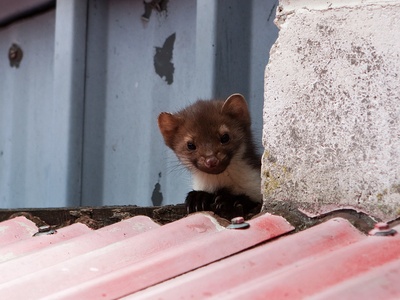
Stone Marten
Also called beech marten; more tolerant of open country and urban areas than pine marten. Often nests in buildings and barns, scavenges fruit and small prey. Common across many states and adaptable to human landscapes.
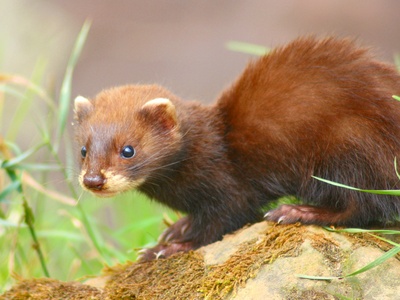
European Polecat
Dark, musk-scented mustelid that hunts rodents and amphibians. Prefers mixed farmland, wetlands and woodland edges. Widespread but elusive, sometimes mistaken for feral polecat-ferret hybrids.
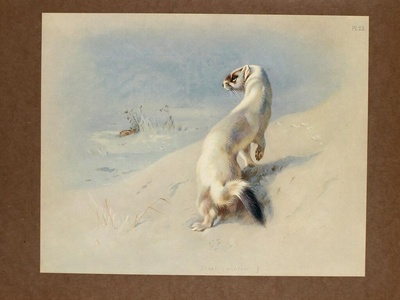
Stoat (Ermine)
Small predator with brown summer coat and white winter morph in colder areas. Active day and night, preys on rodents and birds. Present in varied habitats from meadows to woodland margins across Germany.
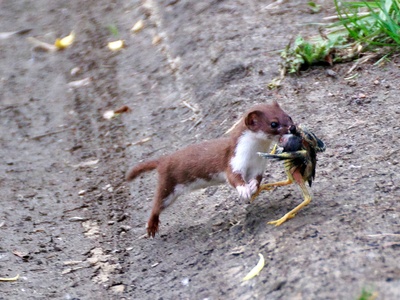
Least Weasel
Tiny, highly carnivorous mustelid that follows small rodents into burrows. Very slim and agile, often overlooked. Present across much of Germany in farmland, hedgerows and grassland habitats.
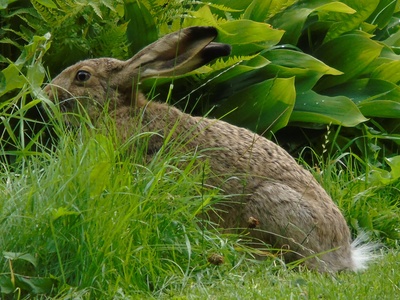
European Hare
Large brown hare of open fields and farmland with long ears and powerful hind legs. Mostly crepuscular, common across agricultural landscapes though populations fluctuate with land use changes.
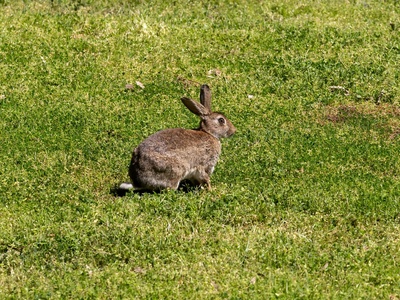
European Rabbit
Introduced and widely naturalized; forms colonies in meadows, dunes and parklands. Small, social herbivore that creates warrens and is prey for foxes, raptors and mustelids. Common in suitable habitats.
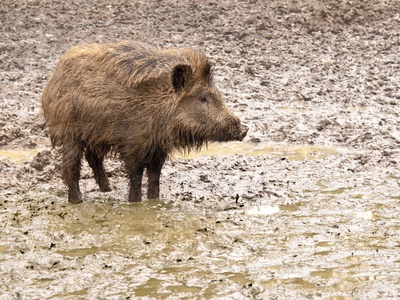
Wild Boar
Heavy, tusked omnivore that roots in soil for food. Populations booming and widespread across forests and farmland, can cause crop damage and collisions with vehicles. Most active at night and in dawn/dusk periods.
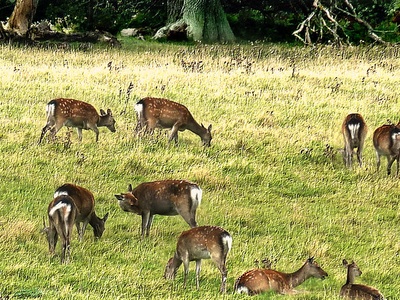
Roe Deer
Small graceful deer common in woodlands, hedgerows and farmland. Diurnal and crepuscular browsers; photographed frequently at forest edges and gardens. Populations stable and widespread across almost all states.
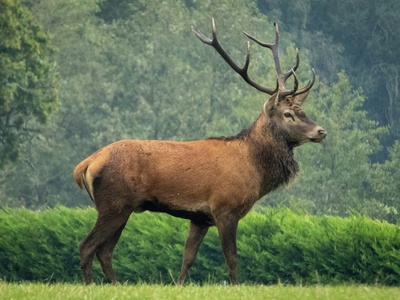
Red Deer
Large forest and open-country deer with impressive antlers in males. Found in larger woodland tracts and managed reserves; common in southern forests and low mountain ranges. Noted for autumn rutting calls and herd behavior.
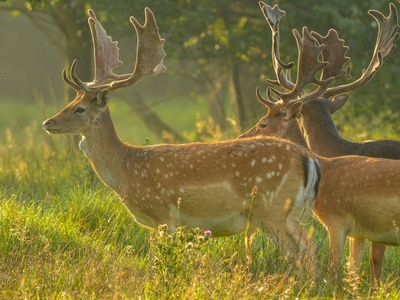
Fallow Deer
Introduced but long-established deer with palmate antlers and variable coat. Found in parks, woodlands and estates. Often semi-wild and common in southern and western Germany; grazes fields and clearings.
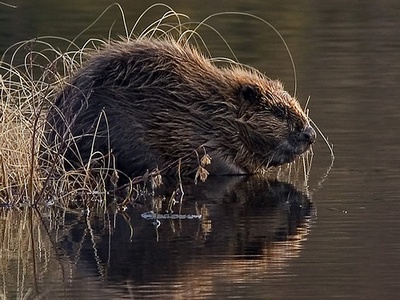
European Beaver
Large semi-aquatic rodent that builds dams and lodges, influential ecosystem engineer. Reintroduced and now widespread along rivers and streams. Look for gnawed stumps, dams and flat tail prints in mud.
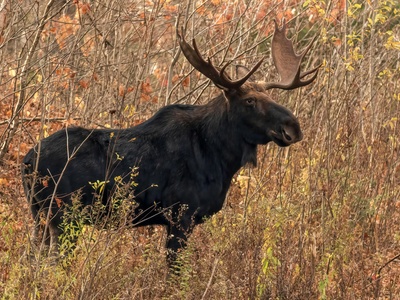
Moose (Eurasian Elk) (vagrant)
Very large browsing deer occasionally wandering from Scandinavia into northern Germany. Rare vagrant sightings reported in northern states, mainly in forested wetland areas. Not resident but noteworthy when seen due to massive size and long legs.
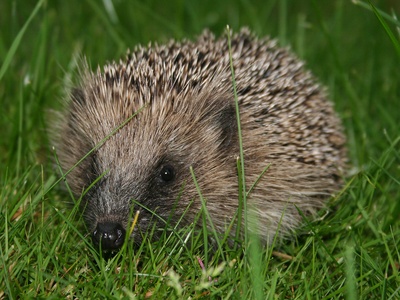
European Hedgehog
Familiar spiny insectivore of gardens, hedgerows and parks. Nocturnal and often seen in gardens in summer. Populations face threats from road mortality and habitat loss; easy to recognize when curled into a ball.
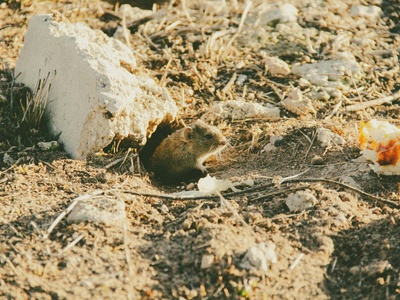
Common Vole
Small, stocky rodent of grasslands and arable fields with high reproductive rates. Important prey for raptors and mustelids. Populations can fluctuate and sometimes reach pest levels in farmland.

Water Vole
Chunky semi-aquatic rodent with blunt nose and smaller ears than rats. Lives along slow rivers, ditches and ponds. Declined in places due to habitat loss and mink predation; conservation and reintroduction projects underway.
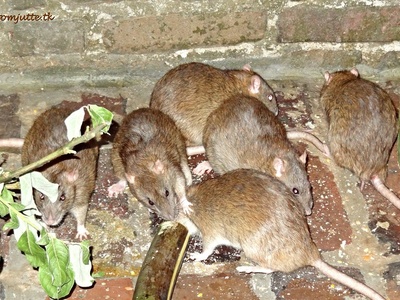
Brown Rat
Common commensal rodent occupying sewers, fields, farms and buildings. Highly adaptable omnivore and prolific breeder. Found in urban and rural areas across all German states; often active at night and around water.
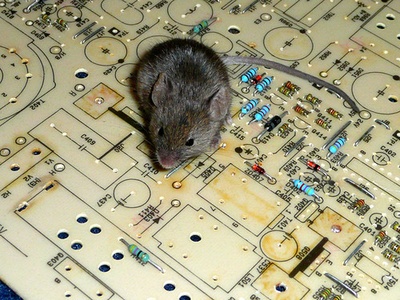
House Mouse
Small commensal rodent living in buildings and fields. Often unnoticed but ubiquitous where humans live. Omnivorous and fast-breeding; plays a role in urban food webs and pest control efforts.
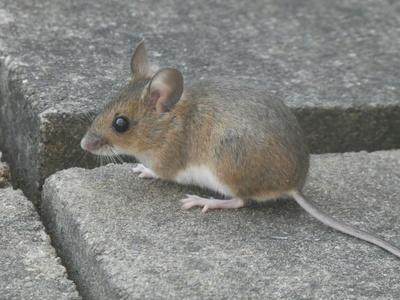
Wood Mouse
Agile, long-tailed field and woodland mouse that climbs and nests above ground. Common in hedgerows, gardens and forests, an important prey item for owls and foxes.
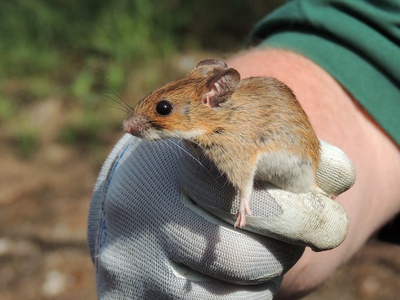
Yellow-necked Mouse
Similar to wood mouse but with a pale collar; prefers mature deciduous woodlands and parkland. Common in central and southern Germany; often nests in tree cavities and thatch.
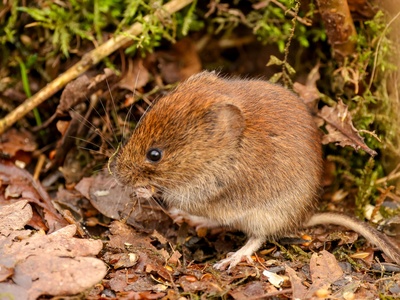
Bank Vole
Brown, compact vole of woodland and hedgerows. Active year-round, feeds on seeds and vegetation. Abundant in forest floors and undergrowth where it supports many predators.
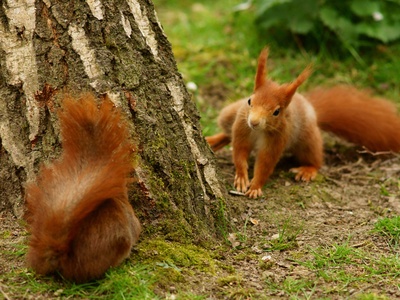
Red Squirrel
Arboreal, red or grey squirrel that feeds on cones, seeds and buds. Common in mature coniferous and mixed forests across Germany; active and vocal, often seen in parks and woodlands.
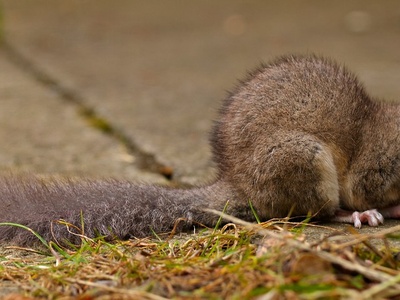
Edible Dormouse
Nocturnal arboreal rodent with bushy tail, large eyes and long hibernation. Prefers deciduous woodlands, orchards and old parks. Locally common in central and southern Germany; sometimes nests in houses attics.
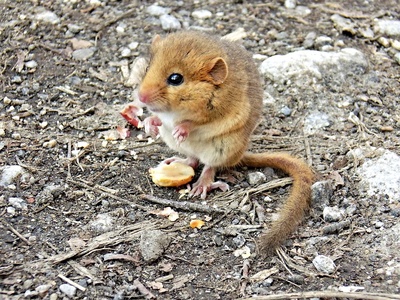
Hazel Dormouse
Small golden-brown nocturnal climber of hedgerows and woodlands. Hibernates and feeds on insects, fruit and blossoms. Declining in parts; protected and valued for its sensitivity to habitat fragmentation.
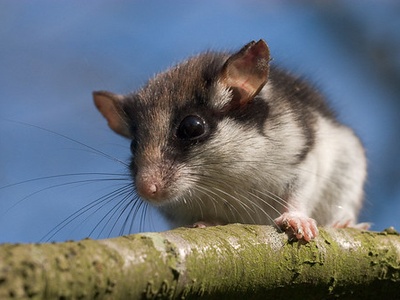
Garden Dormouse
Large-eyed nocturnal dormouse found in warm woodland edges, orchards and rocky sites. Population fragmented and declining; notable for its ringed tail and varied diet including insects and fruit.
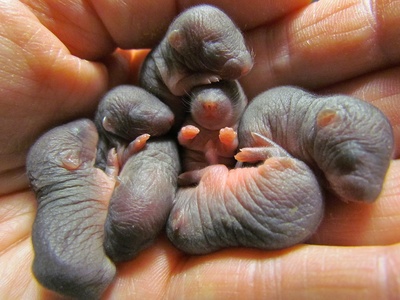
European Mole
Fossorial insectivore with velvety fur and powerful forelimbs for digging. Creates molehills and tunnel networks in lawns, meadows and fields. Widespread across Germany and commonly encountered by gardeners.
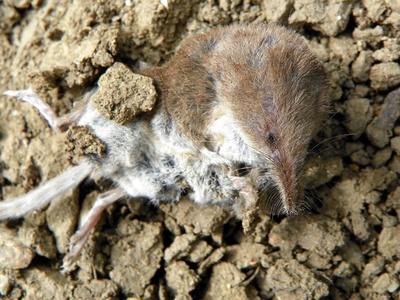
Common Shrew
Tiny high-metabolism insectivore with a pointed snout and active day-night lifestyle. Found in woodlands, hedgerows and grasslands. Produces many young and is a key prey species for small predators and owls.
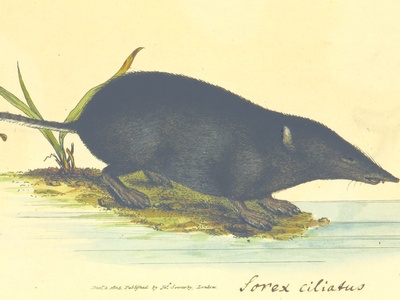
Eurasian Water Shrew
Semi-aquatic shrew with water-repellent fur and insectivorous diet. Hunts in shallow water for invertebrates and small fish. Found along clean streams and marshes; sensitive to water pollution.
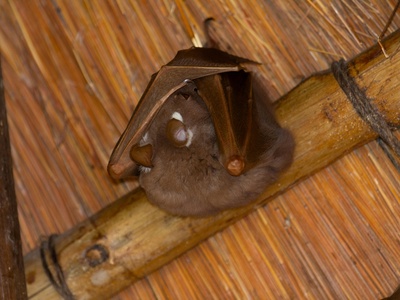
Brown Long-eared Bat
Distinctive bat with very large ears and slow flight that gleans insects from foliage. Roosts in buildings and tree cavities. Widespread and often detected near woodlands and gardens at dusk.

Common Pipistrelle
Small, agile insectivorous bat commonly seen at dusk over parks and water. Frequently roosts in buildings and bat boxes. Very abundant and one of Germany’s most familiar bat species.
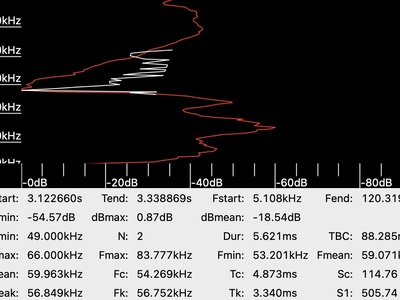
Soprano Pipistrelle
Similar to the common pipistrelle but often forages along waterways. Small and fast-flying, roosts in buildings and bridges. Increasingly recorded across Germany and often seen in urban parks and river corridors.
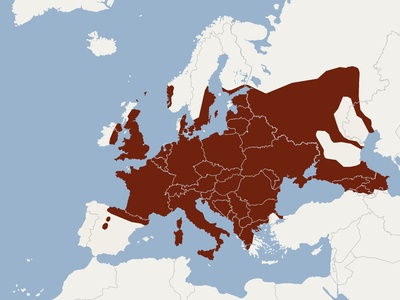
Nathusius’ Pipistrelle
Migratory pipistrelle that follows rivers and coasts during seasonal movements. Often recorded at river corridors, lakes and coastal areas. Regular migrant and breeding species in northern and eastern states.
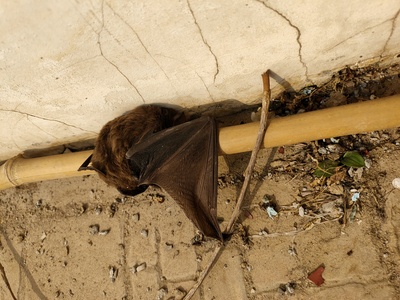
Noctule
Large, fast-flying bat that emerges early and forages high above woodland and towns. Roosts in tree holes and buildings; commonly seen as silhouettes at sunset. Widespread and a major summer migrant.
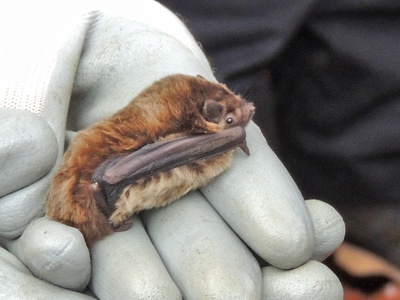
Leisler’s Bat
Medium-sized bat preferring open woodlands and parkland. Often a late-emerging species that feeds on larger flying insects. Local but regular in many parts of Germany.
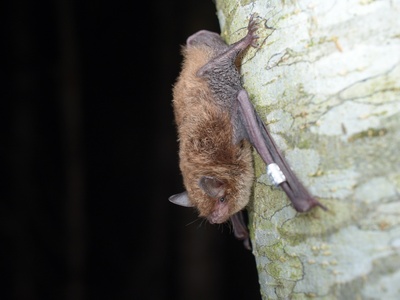
Daubenton’s Bat
Water-loving bat that skims low over water to catch insects. Often roosts in bridges and trees near rivers and lakes. Easily observed near calm waterways at dusk.
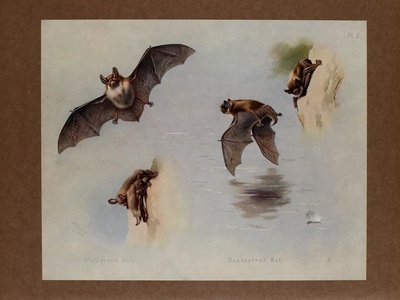
Natterer’s Bat
Forest-associated bat that gleans insects from foliage and bark. Prefers mature woodlands and roosts in tree cavities, older buildings and bat boxes. Widely distributed but locally variable.
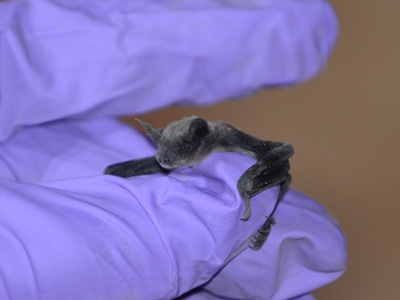
Greater Mouse-eared Bat
Large Myotis species that hunts on the ground for beetles and large insects. Roosts in caves, attics and old mines. Present in southern and western Germany in forested and karst regions with underground roosts.
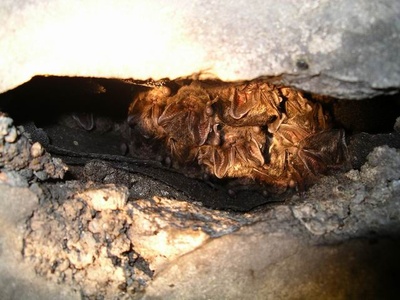
Barbastelle
Dark, broad-headed bat that prefers old deciduous woods and riparian corridors. Roosts in tree cavities and buildings; locally rare and protected, notable for its fluttering flight and specialized diet.
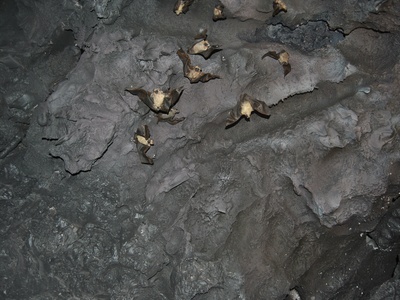
Greater Horseshoe Bat
Large horseshoe bat with noseleaf used for echolocation; prefers warm, undisturbed roosts in caves and old buildings. Restricted and locally rare in southwestern Germany; conservation-focused species with distinctive resting posture.
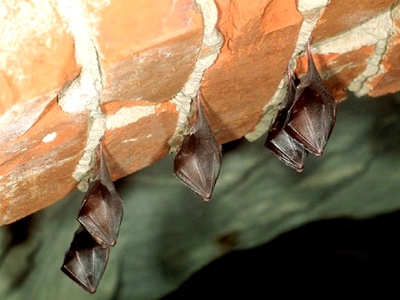
Lesser Horseshoe Bat
Small horseshoe bat of warm, sheltered roosts and woodland edges. Sensitive to disturbance and habitat loss; survives in pockets mainly in southwestern Germany and along river valleys with insect-rich habitats.
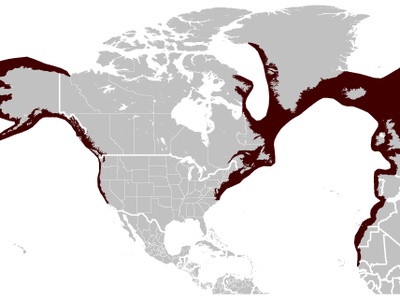
Harbour Porpoise
Small toothed cetacean of the North Sea and adjacent Baltic waters. Common off the German coast and in estuaries; seen from boats and coasts. Short-snouted and shy, often glimpsed as small dorsal lumps or brief blows.
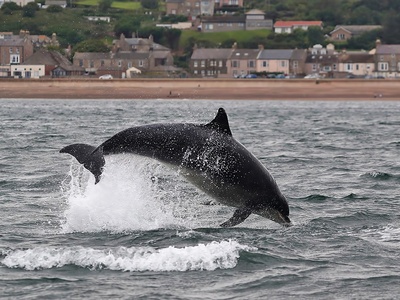
Bottlenose Dolphin
Large coastal dolphin occasionally seen in the North Sea and estuaries. Mostly a vagrant but some coastal groups are observed regularly. Recognizable by robust body and curved dorsal fin; attracted to fish shoals.
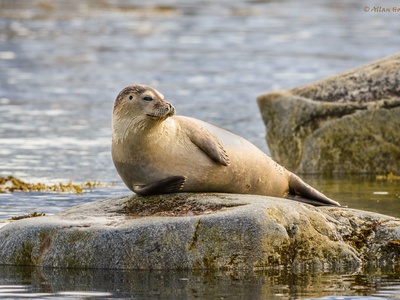
Harbour Seal
Common coastal pinniped that hauls out on sandbanks and mudflats in the North Sea and Baltic. Spotted resting on shores and islands; feeds on fish in shallow waters and increasingly visible with conservation successes.
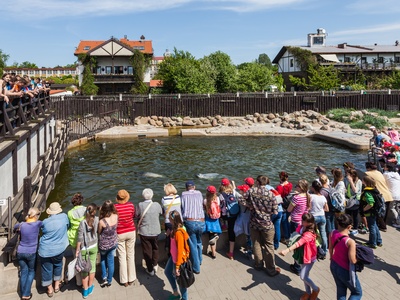
Grey Seal
Large seal with horse-like profile that breeds on North Sea coasts and islands. Increasing numbers on sandbanks and islands; notable for loud vocalizations and substantial size compared to harbour seals.
